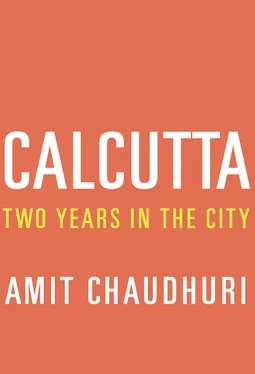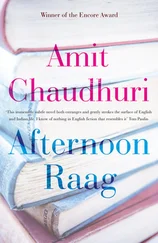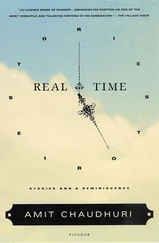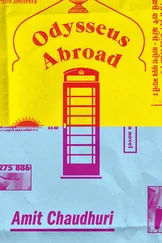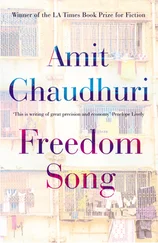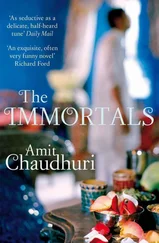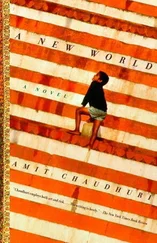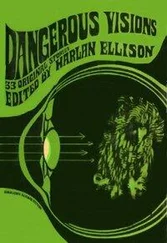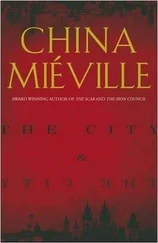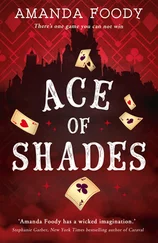That’s from more than twenty years ago, but the injustice of it is still fresh. It embodies the way time, and everything in time’s continuum, behaved, and in many ways, continues to behave in Calcutta: as if there were always a slight excess of it, in which to have a pointless encounter, or to exchange an unnecessary word or two. But today, there’s the alternative of slipping anonymously into the shiny Music World — as long as you can avoid stumbling on to, or hearing, the new releases.
Cross the road from Music World and you are in Free School Street — now called Mirza Ghalib Street after the great nineteenth-century Urdu poet who lived here for a few years and witnessed, bemused, the advance of the British Raj — and then, going past a petrol station, you are, in a minute, in front of Mocambo. Always, there are people — often couples, often small families — loitering before the door and the saluting watchman with no noticeable aim except, as it turns out, to get in: fair-eyed, starved Europeans, who cultivate a look of simplicity and subsist largely on sex; the well-to-do, smart Marwari families, who rally around each other (their great strength and cause of success) even when standing on the pavement; the solitary bohemian or the left-wing Bengali couple who, like their radical nineteenth-century precursors, sometimes still make a point of eating beef steak; the ordinary, young Bengali customer, motorcycle helmet in hand (for he can’t afford a car), who knows no home or horizon but Calcutta, yet is entirely dispensable to its fortunes, and who experiences a sporadic passion for drinking beer and eating out. The group gathers here because Mocambo takes no reservations. Inside, where not a table is empty (thus, the apologetic crew that waits outside, bearing the brunt of the heat or absorbing what’s left of the evening breeze), is a scene of murmuring incandescence. The lights are low; but, to make up for it, the upholstery is red, as it must have been in the fifties, when the restaurant opened: you feel, when you step in, that you’re back in the singular world created by the Cold War, when one half (a fraction greatly exaggerated, of course) of the people of the world was eating out, and the other half standing in queues. Red, in that epoch, not only signified revolution, but, depending on its context, was also a constituent of psychedelia: and it’s as a remnant of the latter, with its subterranean glow, that it resurfaces here.
Again, the prawn cocktail — that most debased of starters — is, here, justly famous. It is part appetiser and part dessert; the generous pink sauce that drowns the prawns is not Rose Marie, but almost a liquid confection — as it was in the Skyroom; but thicker, like melted ice cream — something that’s sweeter than Rose Marie, but also sharper, with suggestions of Tabasco, black pepper, and — as the black-suited steward once told me in private — mustard. It’s something with which to disarm and surprise a hostile party. There’s a sinister undercurrent to Mocambo—“sizzlers,” fizzing chunks of meat on hot plates, is the other, more audible, speciality — perfectly in accord with what was once the infantile quality of the bhadralok’s fantasy life. On the left of the entrance, the wall is divided into four sections with gigantic dancing girls from Degas, the blue having been retouched and paled again, once painted with a mixture of gaucheness and zeal by Shiv Kothari — the restaurant’s late owner.
Further up from the entrance to Mocambo, thirty or so steps away, is where Ramayan Shah has his pavement stall, if one could call it that. These days when I come to Park Street for some reason — to superficially browse at the Oxford Bookstore or spend time at Mocambo — I’m usually off in that direction later, and the people there must view me approaching with mixed feelings. As ever, Nagendra is ironing clothes, in pyjamas and spotless white vest, his hands moving automatically and swiftly. I’ve never seen him stubbly or unkempt; his clean-shaven cheeks have the enviable green halo of one who is meticulously, and naturally, clean. His thick hair is perfectly combed and immovable and, since it’s jet black, I suspect he dyes it. Later, I found out that this is where he lives and sleeps — here, next to the ironing stall, on one of these benches — but I still haven’t asked him how he manages to look the way he does: transcendental and not of his surroundings. On the other hand, Ramayan Shah is hardly ever in his surroundings when I am there — he’s gone again to the market to buy stuff which he’ll later cook for his customers.
The second time I went looking for this stall, I was hoping to see how the boy was — the one who’d been lying on what seemed like a pantry table, his arm stiff and fingers clenched, sobbing. Had the medicines brought about an improvement; was he OK? In fact, he was nowhere to be seen — I turned to ask Nagendra where he was, but the man had as good as forgotten him; I had to reconstruct that episode, while he listened to my inelegant, rambling sentences, for him to get a sense of what I meant. Light glimmered: “Woh ghar chala gaya” —“He’s gone home”—“Home,” as I began to realise from these encounters, being most often some place in Bihar. The unperturbed tone of voice told me that no emergency had made the departure necessary; that toing and froing between Bihar and Calcutta was unremarkable, and happened repeatedly.
Because Nagendra is so perfect and unflappable, I realise I’ve stopped short of interviewing him. However, I’ve had desultory conversations — conversations that I imagined were going to be at once rigorous and illuminating, but have turned out to be desultory and opaque in retrospect — with the interlopers who hang about in Ramayan Shah’s little space (or shelter, since part of it has a tarpaulin roof). Although the interloper might look as if he’s been sitting there permanently, or that he’s a stakeholder in the business, or a regular, or family, he may be none of these, and it is likely you will not see him a second time. What seems certain is that Ramayan Shah’s eatery is not an eating place in the way we middle-class people understand that entity; that is, you don’t actually have to partake of the food to while away hours over there, or to even go to sleep on the furniture. On the other hand, I’ve occasionally noticed (and in this, too, it differs from, say, Mocambo) people freely access food without paying for it, even when the proprietor is away — which, observation tells me, is a great deal of the time. I’m assuming that there’s some local system of scrupulousness and credit to keep this trade alive for so many years, which is not comprehensible at first, or second, glance; some notion of spontaneous self-service which allows people from time to time to take advantage of the place, in keeping with its ramshackle do-it-yourself ethic.
A man was crouched in the centre, next to where it said Chandan Hotel, peeling potatoes. He was in his late twenties, slight, small, but fit, with a thin moustache; I wondered for a second if he was Ramayan Shah’s family, or an employee — in which case, he would be serious labour. It turned out he was just part of the constant drama of the place: he was helping out. He cast, naturally, a wary and resistant look on me; he didn’t hugely mind answering my questions, but wanted to know why I was asking them. Indeed, my hovering presence there was mysterious, if not a downright nuisance. I explained I was writing a book on Calcutta; this sort of satisfied him — he went back to peeling and slicing the potatoes, and to receiving my questions without any flicker of interest. No, he didn’t work here; he merely lent a hand sometimes in exchange for a plate of food; his work, in fact, was issuing parking stubs when cars parked themselves on Free School Street, and collecting money from them when they departed. He was, in other words, one of those inevitable parking attendants with whom no driver in Calcutta, as they start their engine and manoeuvre the car out of the parking space, can escape reunion — they materialise instantly without a hint of being caught unawares, and have already begun counting the change. At this moment, though, the man was entirely settled, poring over the potatoes; when I quizzed him about this, he reassured me that there was no car in peril of leaving — as if his intuition were generally dependable. His name, he told me, was Inder Kumar, and he ate both lunch and dinner (usually) at Ramayan Shah’s. What was the fare like, I asked, because I was interested, and, like anyone else, possess a streak of romanticism that wishes street food were more unexpectedly delectable than what you order in restaurants; and, yes, there is street food that seduces you as your eyes skim over it, but the slop I see people hungrily consume in pavement stalls like Ramayan Shah’s has never stirred, but in fact only repelled, me. Rice was served during the day, Inder Kumar said, or roti (chapatis) if you preferred; and sabzi —cooked vegetables — and a choice of either rui fish (carp, most beloved of fishes in Bengal, most prized as well as the most humble and readily available, whose white flesh tastes to me similar to what I imagine blotting paper would taste like if you prepare it to the same recipe) or egg, which is, everywhere in the nation, the human being’s cheapest source of protein. The rate was thirteen rupees a plate if you had the egg slop, and fifteen if you chose the fish, which looked — especially the chunky gaada piece chopped from the middle of the carp — like a small but solid piece of wood.
Читать дальше
